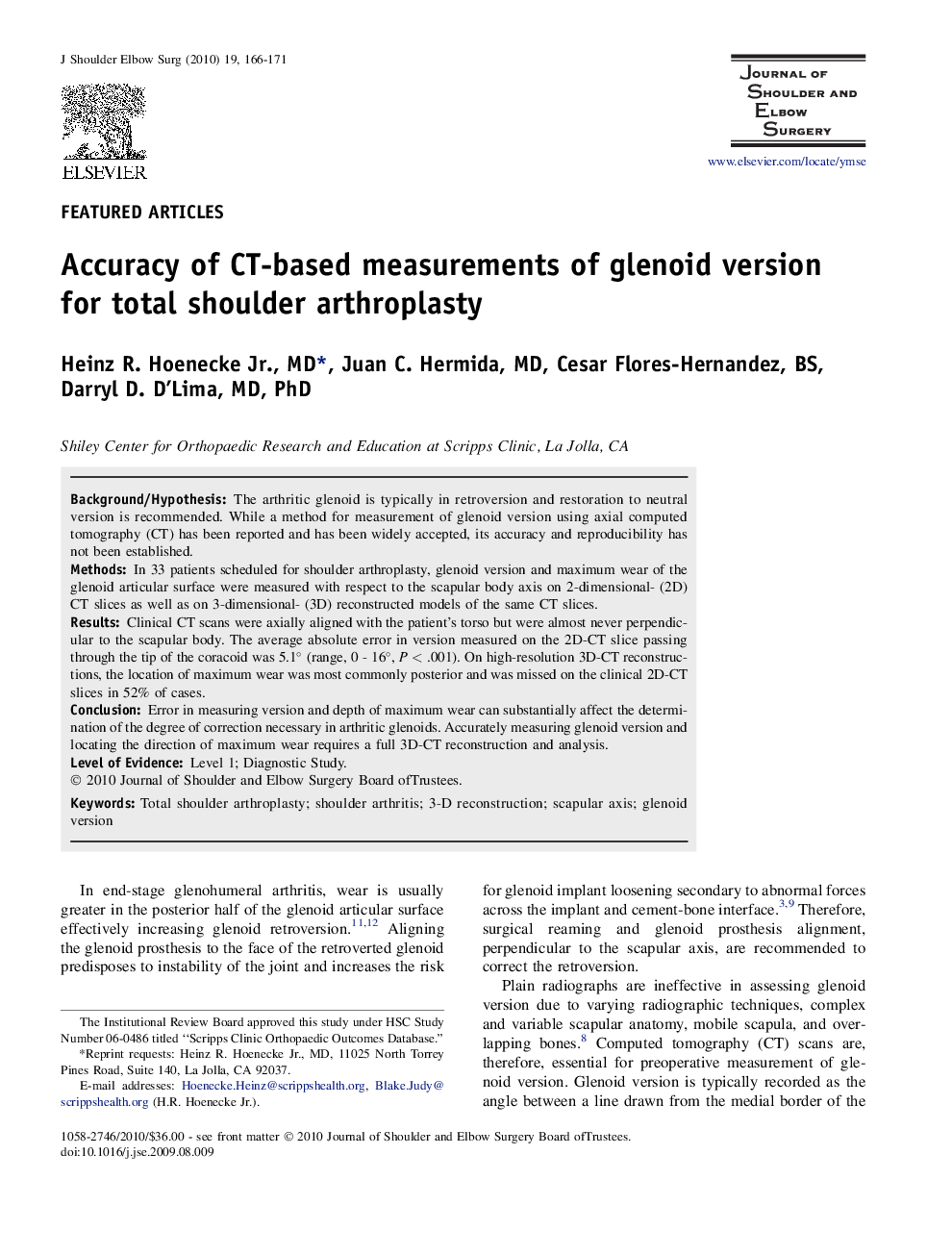| Article ID | Journal | Published Year | Pages | File Type |
|---|---|---|---|---|
| 4076068 | Journal of Shoulder and Elbow Surgery | 2010 | 6 Pages |
Background/HypothesisThe arthritic glenoid is typically in retroversion and restoration to neutral version is recommended. While a method for measurement of glenoid version using axial computed tomography (CT) has been reported and has been widely accepted, its accuracy and reproducibility has not been established.MethodsIn 33 patients scheduled for shoulder arthroplasty, glenoid version and maximum wear of the glenoid articular surface were measured with respect to the scapular body axis on 2-dimensional- (2D) CT slices as well as on 3-dimensional- (3D) reconstructed models of the same CT slices.ResultsClinical CT scans were axially aligned with the patient's torso but were almost never perpendicular to the scapular body. The average absolute error in version measured on the 2D-CT slice passing through the tip of the coracoid was 5.1° (range, 0 - 16°, P < .001). On high-resolution 3D-CT reconstructions, the location of maximum wear was most commonly posterior and was missed on the clinical 2D-CT slices in 52% of cases.ConclusionError in measuring version and depth of maximum wear can substantially affect the determination of the degree of correction necessary in arthritic glenoids. Accurately measuring glenoid version and locating the direction of maximum wear requires a full 3D-CT reconstruction and analysis.
